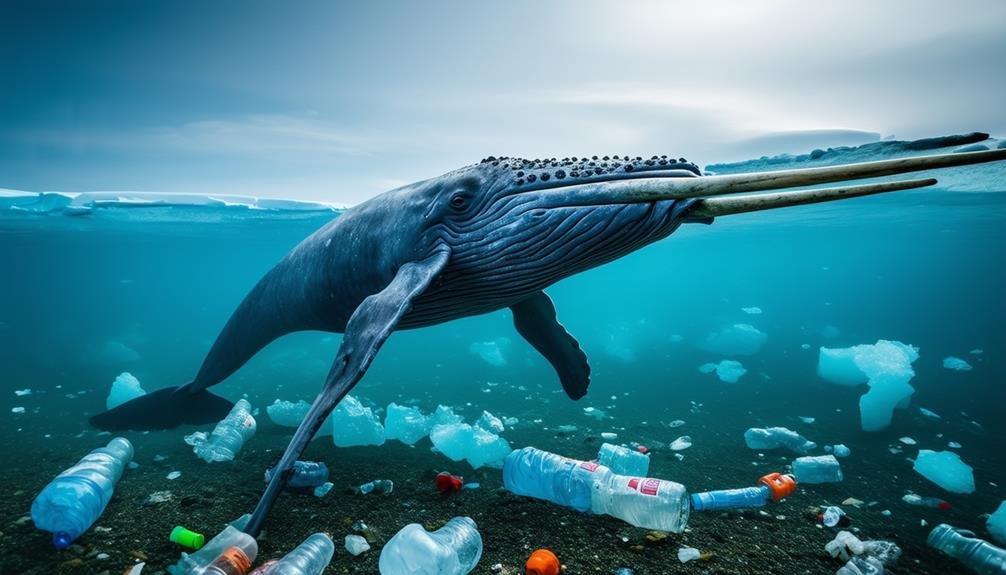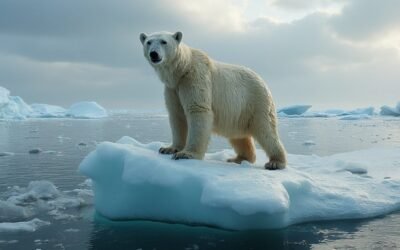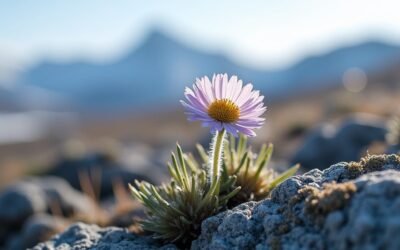Narwhals are essential to the Arctic ecosystem, serving as key indicator species and contributing to ecological balance. They regulate prey populations like Greenland halibut and Gonatus squid, thereby maintaining trophic dynamics. Sensitive to sea ice changes, narwhals provide valuable insights into environmental shifts. However, they face significant threats from climate change, overfishing, and plastic pollution, which disrupt their habitat and health. Conservation efforts focus on monitoring populations, reducing human impacts, and proposing quiet zones to minimize noise pollution. Understanding their ecological role helps in maintaining the Arctic's delicate balance. Discover further ways we protect this unique species.
Main Points
- Narwhals regulate prey populations such as Greenland halibut and Gonatus squid, maintaining the Arctic marine food web.
- As sensitive indicators of sea ice changes, narwhals provide early warnings of environmental shifts in the Arctic.
- Narwhals contribute to nutrient cycling, supporting the overall health and productivity of Arctic waters.
- Monitoring narwhal populations helps track the impacts of global climate change and human activities on the Arctic ecosystem.
- Conservation efforts, including quiet zones and reduced hunting, are vital for protecting narwhals and maintaining Arctic ecological balance.
Narwhals' Ecological Importance
As important indicator species, narwhals play an essential role in monitoring the health of the Arctic marine ecosystem. Their presence and behaviors provide critical insights into the region's trophic dynamics, as they regulate prey populations such as Greenland halibut and Gonatus squid. These interactions help maintain the overall balance within the Arctic food web. Narwhals are particularly sensitive to sea ice changes, making them valuable indicators of environmental shifts in this fragile ecosystem.
The migration patterns of narwhals are another significant aspect of their ecological importance. By moving across vast areas, they contribute to nutrient cycling, distributing essential nutrients throughout the Arctic marine environment. This movement supports the productivity and health of various marine habitats. Additionally, narwhals serve as prey for natural predators like polar bears and killer whales, further promoting ecosystem balance by sustaining these apex predators.
Threats to Narwhal Populations
Narwhal populations face numerous threats that jeopardize their survival in the Arctic ecosystem. The impacts of global climate change are particularly concerning for narwhals, as they are highly dependent on stable ice conditions for access to prey. Warming temperatures are causing rapid changes in the Arctic environment, affecting the availability of their primary source of food. This shift in prey availability, compounded by overfishing, severely impacts narwhals' ability to sustain their populations.
Human activities also pose significant risks. Increased shipping traffic and noise pollution disrupt narwhal behavior and migration patterns. Collisions with vessels are another growing concern, directly leading to fatalities. Moreover, disturbances from tourism and research activities can stress narwhal populations, further influencing population trends negatively.
New infectious diseases, potentially exacerbated by changing environmental conditions, present additional threats. These diseases can spread more rapidly as the Arctic warms, introducing pathogens to which narwhals have no immunity. Collectively, these factors create a challenging landscape for narwhals, whose survival is intricately tied to the health of the Arctic ecosystem. Addressing these threats requires coordinated global efforts to mitigate climate change and manage human activities in this fragile region.
Impact of Plastic Pollution

The pervasive issue of plastic pollution presents a significant threat to the health and survival of narwhal populations in the Arctic. Entanglement threats from fishing gear and plastic debris are increasingly common, posing immediate dangers to these marine mammals. Narwhals often ingest plastic, mistaking it for food, which can lead to severe health issues and jeopardize their survival. The ingestion of plastic not only causes physical blockages but also introduces toxic chemicals into their bodies, further endangering their well-being.
Moreover, the presence of plastic debris disrupts the migration patterns of narwhals, as they may avoid areas densely polluted with plastic. This disruption can lead to increased stress and energy expenditure, affecting their overall health. Habitat degradation is another consequence of plastic pollution, with the Arctic environment becoming increasingly compromised. As plastic accumulates, it degrades the natural habitat, making it less suitable for narwhals and other marine life.
Conservation Efforts for Narwhals
In response to the many-sided threats facing narwhal populations, various conservation efforts are being implemented to secure their survival and well-being. Monitoring population trends in different regions of Greenland is vital to evaluating the impacts of hunting and environmental changes. For example, calls for a pause on narwhal hunting in Southeast Greenland have been made due to significant population declines from over 1,700 to a few hundred since 1960.
Despite these efforts, the Greenland government's resistance to a zero hunting quota in Southeast Greenland highlights the complexities involved in balancing economic interests with conservation priorities.
Environmental pressures such as rising sea temperatures, sea ice retreat, and increased ship traffic further exacerbate the threats to narwhals. Consequently, conservation measures must address these issues comprehensively to protect narwhal populations effectively.
To mitigate human disturbances, proposals for quiet zones aim to reduce underwater noise, preserving the Arctic marine ecosystem.
- Monitoring population trends
- Calls for a pause on hunting in vulnerable areas
- Addressing environmental pressures like sea temperatures and sea ice retreat
- Proposals for quiet zones to reduce underwater noise
These conservation strategies are essential for maintaining the delicate balance of the Arctic ecosystem.
Narwhals' Role in Arctic Balance

Important to the Arctic ecosystem, narwhals serve as key indicators of environmental health and play a pivotal role in maintaining ecological balance. Their population trends and behaviors offer valuable insights into the state of the marine environment, making narwhals essential ecological indicators. As climate change accelerates, leading to sea ice melts, the sensitivity of narwhals to these changes underscores the broader impacts on the Arctic ecosystem.
Narwhals contribute significantly to the regulation of trophic dynamics by preying on species such as fish and squid, thereby ensuring a balanced Arctic food web. Their role in controlling prey populations helps maintain the equilibrium necessary for a healthy marine environment. Additionally, the migration patterns of narwhals facilitate nutrient cycling in Arctic waters, which is vital for the overall health and productivity of the marine ecosystem.
Understanding and protecting narwhal populations is paramount for sustaining Arctic balance. As their habitats are increasingly affected by climate change, monitoring narwhal population trends becomes crucial for evaluating the ecological impacts. To sum up, the narwhals' role extends beyond their immediate environment, serving as a barometer for the broader health of the Arctic region.
Conclusion
Narwhals play a pivotal role in maintaining the Arctic ecosystem's balance. However, their populations face significant threats from climate change, habitat disruption, and plastic pollution. Effective conservation efforts are important to mitigate these threats and guarantee the survival of narwhals. Protecting narwhals not only preserves this unique species but also supports the broader ecological health of the Arctic region. Sustainable practices and continued research are essential in safeguarding these keystone species and their environment.


